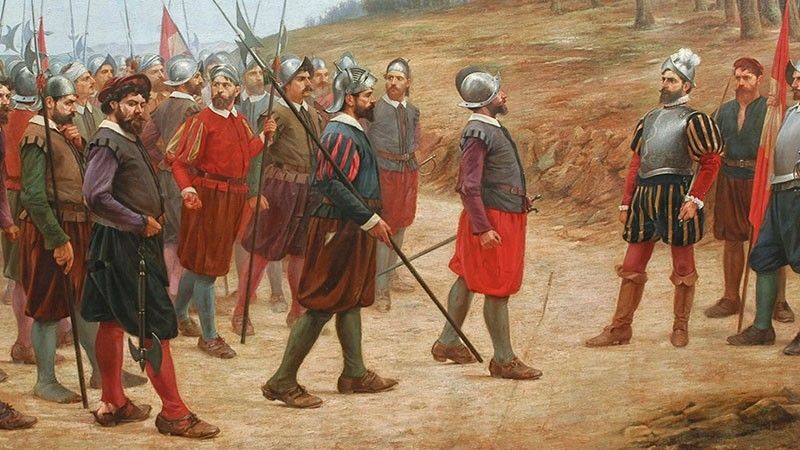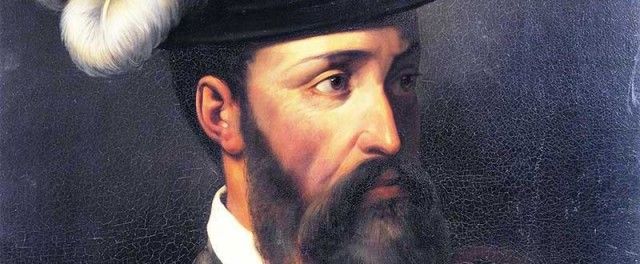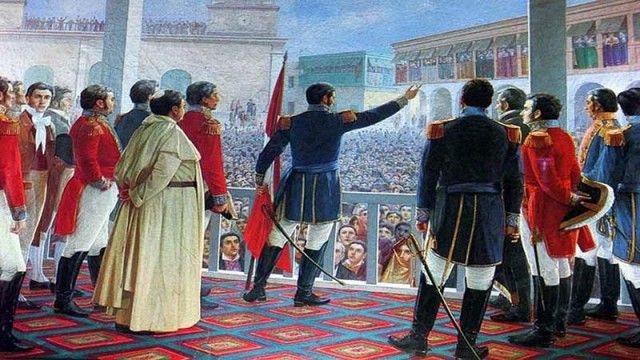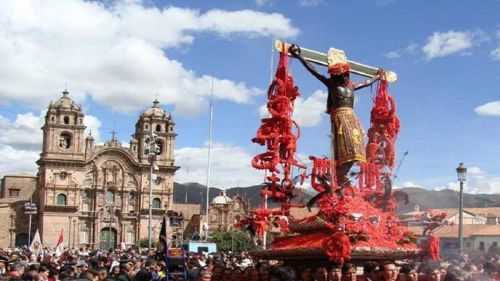After the Italian explorer and navigator Christopher Columbus on its way to find a new route to India and the Spice Islands set foot on the Caribbean islands of San Salvador (October 1492) and Hispaniola (December 1492) claiming the islands for the King and Queen of Spain (who had sponsored the trip), it took the Spaniards less than 50 years to bring large parts of North America, Central America and South America under their control - with a devastating impact on the indigenous populations and great civilizations such as the Aztecs in the area of today’s Mexico and Incas in today’s Peru.
For properly controlling and ruling over its vast territories in the New World the Spanish crown established so called Viceroyalties, political, social, and administrative institutions which were considered a province (not a colony) of the Spanish Empire. The Viceroyalties were governed by a Viceroy who was a direct representative of the Spanish crown with executive, legislative, judicial, military, and clerical power.
Establishing the Viceroyalty of Peru
In 1533 the Spanish conquistador Francisco Pizarro gained control over Cusco, the capital of the Inca Empire, ending the Inca rule and ushering in a new era. He first organized a municipal government of Cusco under Spanish rule and then set out to find a suitable spot to establish a new city. Pizarro finally founded “his” city, Lima, in the desert stripe between the Pacific Ocean and the Andes in the fertile valleys of the Rimac River in January 1535.
However, control of the new territories didn’t come easy. Even though the Spanish Crown established the Viceroyalty of Peru in 1543 which was spanning from present-day Argentina, Chile, Bolivia and Peru to Ecuador, Colombia, and Panama, with Lima, the “City of Kings” as its capital, the next years were characterized by rebellions of the indigenous population led by Manco Capac II and Spanish conquerors fighting each other over the division of the rich spoils.
While Viceroy Andrés Hurtado de Mendoza (1555-1561) could at least call the unruly conquerors to reason, only when Francisco de Toledo (1569-1581) took over the Viceroyalty of Peru finally came to rest and received a stable leadership in accordance with the Spanish Crown. Toledo established a strict Spanish administration and adapted Inca institutions to the purposes of the Spanish authority. He put the indigenous population under systematic control by ordering the indigenous leaders to manage the affairs of the local population and making them responsible for observing the laws, collecting taxes and providing forced labor.
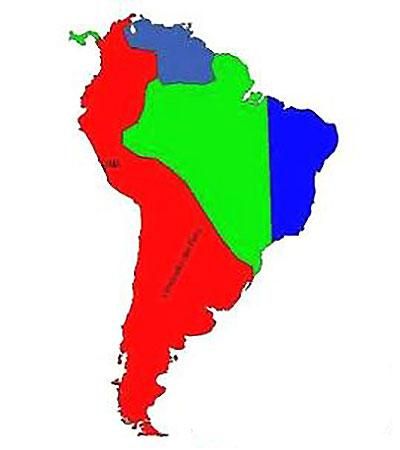
Expansion of the Viceroyalty of Peru 1543 to 1717 (red), unexplored territories (green), Portuguese territories (dark blue), Venezuelan territories (light blue)
Corregidores, representatives of the Spanish power, were appointed ruling over a district, overseeing local affairs, administering justice, both criminal and civil, overseeing the repartimientos (a Spanish labor system imposed on the indigenous population) and presiding over the town council. Corregidores were the most powerful and most hated Spanish officials in the Viceroyalty on a local level, making sure that the indigenous population produces the greatest possible riches and hand them over to the Spanish administration. Officially, they were supposed to protect the interests of both the Spanish Crown and the local population, but they represented like nothing else the system of Spanish domination in the Viceroyalty of Peru. Toledo’s successors followed in his footsteps in accordance with the Spanish Crown.
Farming, trade and services which were the backbone of the economy already since Inca times (and even before that), were continued, however took a backseat when the exploitation of Peru’s rich mineral resources, and here especially silver, were systematically organized and on the back and at the expense of the enslaved local population pushed forward. The blossoming mining industry not only made the Spanish noblesse within Peru and back home rich, but the Viceroyalty of Peru the most important, most powerful, and wealthiest overseas territory of the Spanish Empire.
Lima - the capital of the Viceroyalty of Peru
And the viceregal capital of Lima became the “City of Kings” and the center of power and wealth from where a series of viceroys ruled over vast areas of South America. Lima was also important as seat of the Real Audiencia, the high court which administered royal justice.
The capital as well became an important religious center. A Roman Catholic diocese was already established in 1541 but converted into an archdiocese five years later. Additionally, numerous other religious orders established churches and convents there making Lima the “City of Churches”. The city also became the headquarters of the Spanish Inquisition in South America.
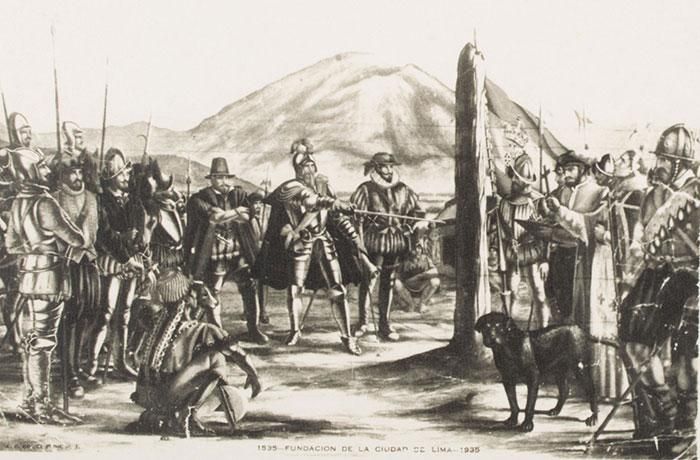
In 1551, the first university in the Americas, the University of San Marcos, was established in the capital. And in 1565 King Philip II of Spain issued a decree ordering the creation of a National Mint in Lima, the Casa de la Moneda, allowing the minting of silver coins in the Viceroyalty of Peru. In 1584 Lima got its first printing press.
Adding to the already great importance and wealth of Lima were Spanish trade regulations dictating that goods from all parts of the Viceroyalty of Peru had to pass through Spanish merchants in Lima and had to be exclusively shipped from and to the nearby harbor of Callao, which made the port Lima’s gateway to Europe (Spain) and later as well to the world.
At the beginning of the 17th century Lima was the most distinguished and aristocratic capital and the major Spanish stronghold in the Americas. It was the political, economic, cultural, and religious center in Spanish South America attracting not only the rich, beautiful, and influential but also the intellectual and artistic. However, by the end of the 17th century the flourishing capital and the Viceroyalty of Peru experienced its first serious difficulties. The abundance of wealth and power as well resulted in pirate attacks, non-Spanish merchants illegally trading and corruption of greedy government officials reflecting the decline of the Spanish Crown from the house of Habsburg.
You can find a more detailed description of the development of Lima in our section "Lima History".
Slow decline of the Viceroyalty of Peru
After the Bourbon dynasty took over as rulers of Spain at the beginning of the 18th century and implemented reforms to enhance the administrative efficiency of the Spanish Viceroyalties, to stimulate the economic development and to strengthen the defense of their overseas territories, the Viceroyalty of Peru had to cope with some changes. While the Viceroyalty of Peru lost its northern territories including the thriving port of Guayaquil in modern-day Ecuador with the establishment of the Viceroyalty of New Granada in 1717, other reforms implemented by the Spanish Crown seem to stabilize and even improve the status of Peru for the next few decades.
However, the establishment of the Viceroyalty of the Rio de la Plata in 1776 resulting in Peru being deprived of large parts of its southern territories - roughly present-day Argentina, Chile, Bolivia, Paraguay, and Uruguay - afflicted the former powerful and wealthy Viceroyalty heavily. Not only did the Viceroyalty of Peru lose its lucrative silver mines in Upper Peru (today’s Bolivia), but a reform of the above-mentioned Spanish trade regulations now allowed merchants in ports to trade directly with Spain ending Lima’s commercial monopoly and weakening the power and status of the Viceroyalty immensely.
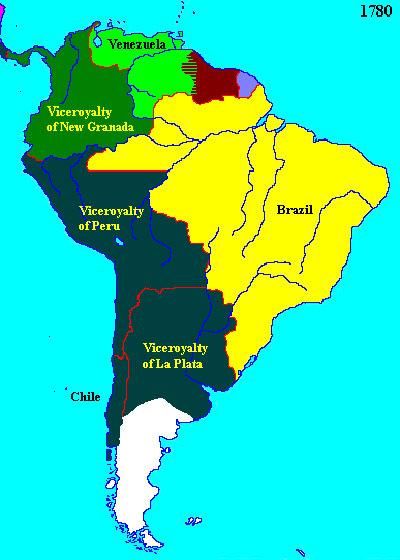
And if that wasn’t enough, in 1780 the indigenous population, who for more than 200 years had suffered from the strict, oppressive and exploitative governance of the Spaniards including forced labor, excessive taxation and ban of their languages, beliefs and traditions, revolted under the leadership of José Gabriel Condorcanqui Noguera, which as a descendant of the last Inca Emperor called himself Tupac Amaru II. The bloody rebellion spread throughout the remaining Viceroyalty of Peru and even into modern-day Bolivia and Ecuador causing severe economic disruption. And even though Tupac Amaru was captured and executed in 1781, the fight against the undesired and hated Spanish occupiers continued until 1783.
With Lima losing its influence at the beginning of the 19th century, the era of the Viceroyalty of Peru, for over 250 years considered the most valuable Spanish possession in the Americas, is nearing its end.


